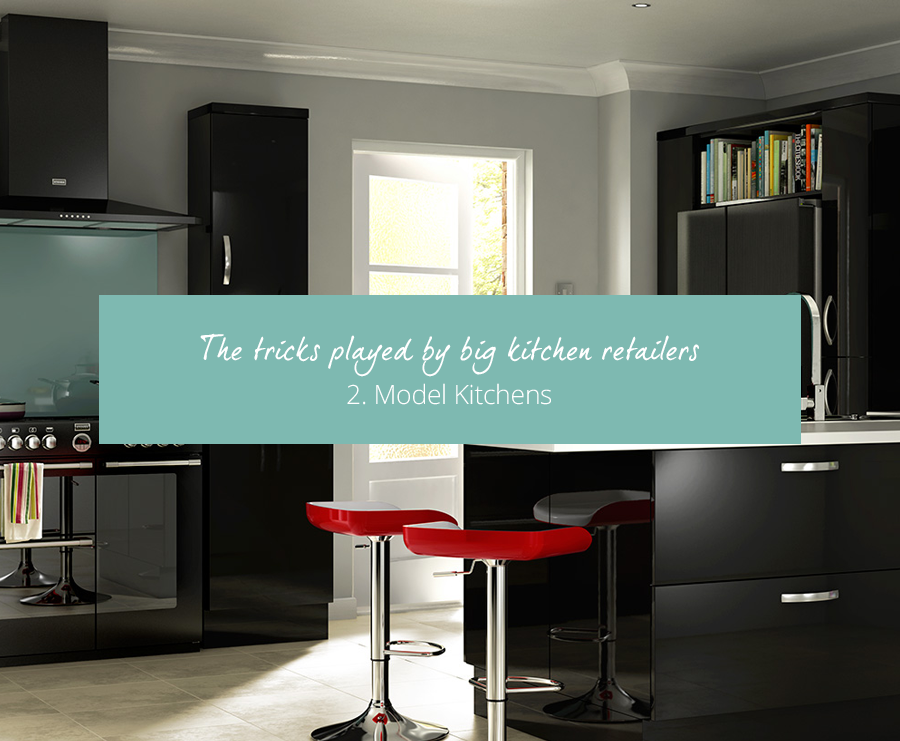The tricks played by big kitchen retailers (2) Model Kitchens
Buying a new kitchen requires a significant investment of time, money and energy. With consumers purchasing a new kitchen on average only every 15 years, UK consumers are faced with a bewildering array of designs, prices, promotions and information when they begin the search for their new kitchen, says Insight Retail Group (IRG), the owners of the Kitchen Compare website.

Many retailers use the selling tool of a ‘Model Kitchen’ to provide an indication of the price of a certain kitchen range. This is both to show comparisons across their ranges, but more importantly to hook consumers into visiting their particular store because the prices look so affordable. The prices of the Model Kitchens are used extensively across retailer showrooms and are often featured in press and TV adverts.
Firstly, every retailer’s model kitchen is different and therefore doesn’t provide a true level playing field on which to make a fair comparison. Secondly, the majority of model kitchens used by retailers are based on an 8 unit galley kitchen, which would barely fit into a small apartment and so is not reflective of the average purchase made by a UK consumer, which is 11 cabinets.
But it gets even better; the model kitchens used by some retailers don’t include worktops, or a sink, or appliances or the cost of installation. Nor does it include plinths or side panels, and even the handles on the front of the cabinets are missing! They are designed to make consumers think that they can afford a certain style of kitchen, when in reality, the average UK kitchen including installation, will cost more than three times that amount.
3rd Jan 2017The Compare Network
Copyright – Insight Retail Group Ltd 2025 All rights reserved